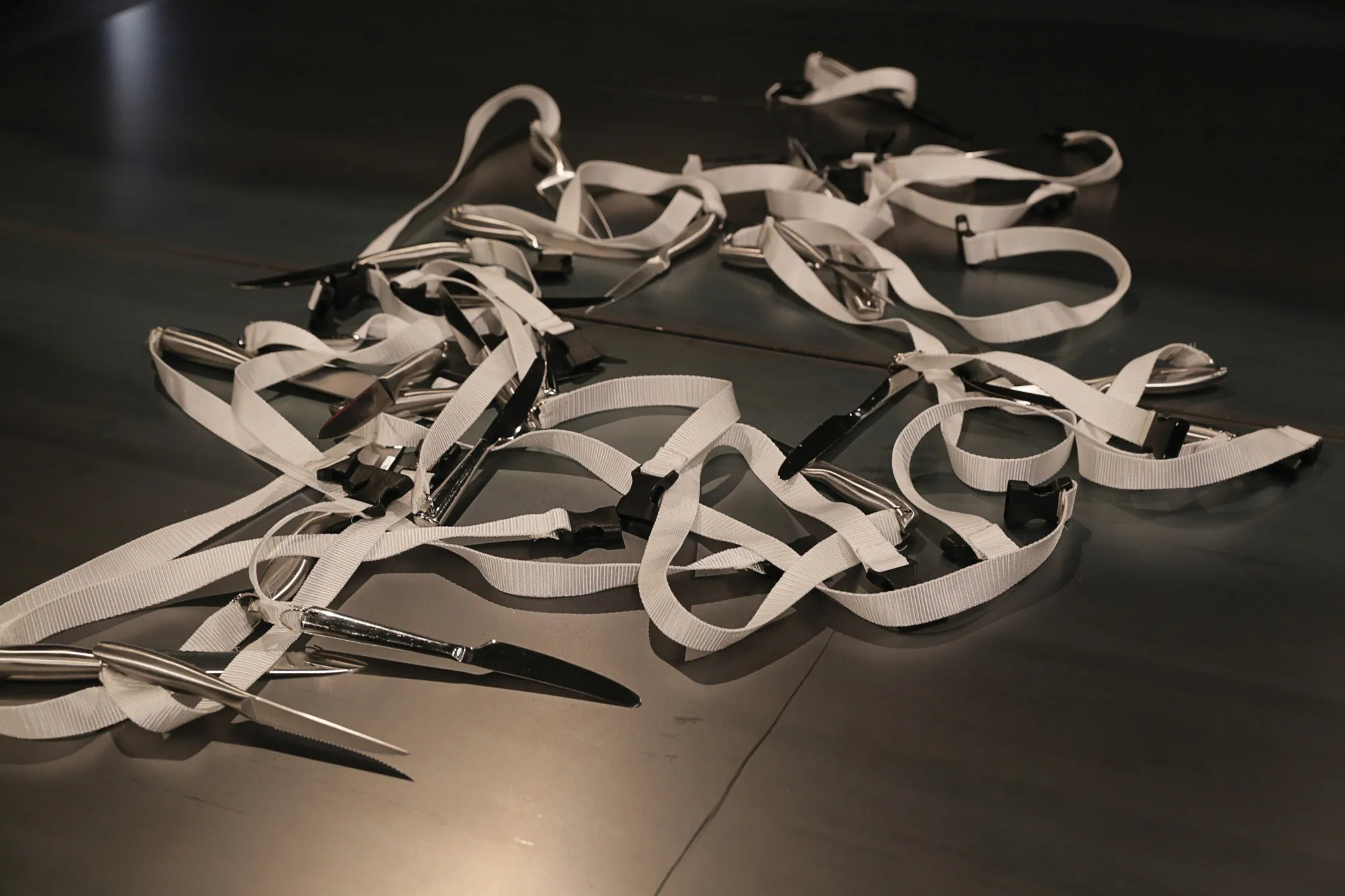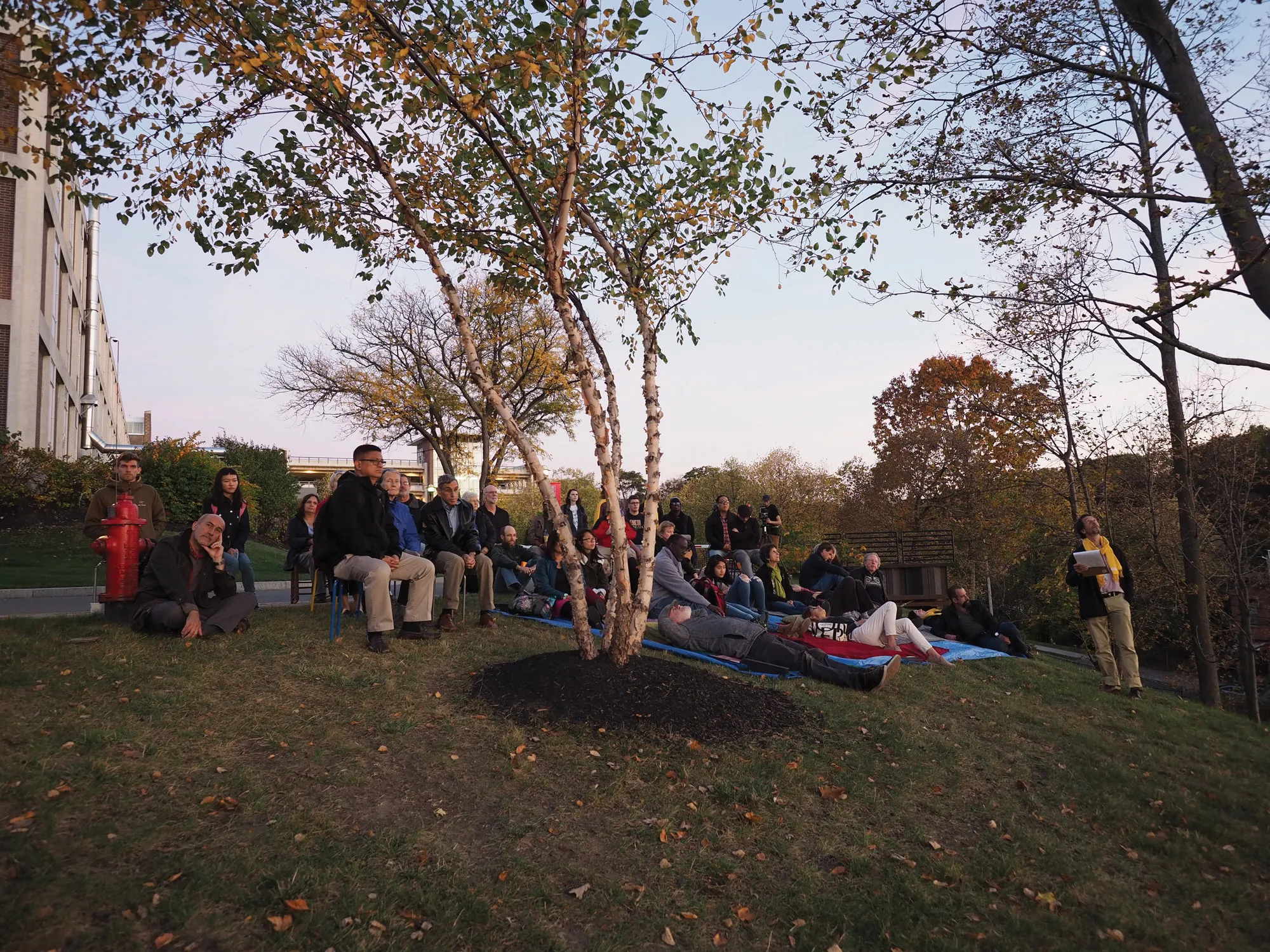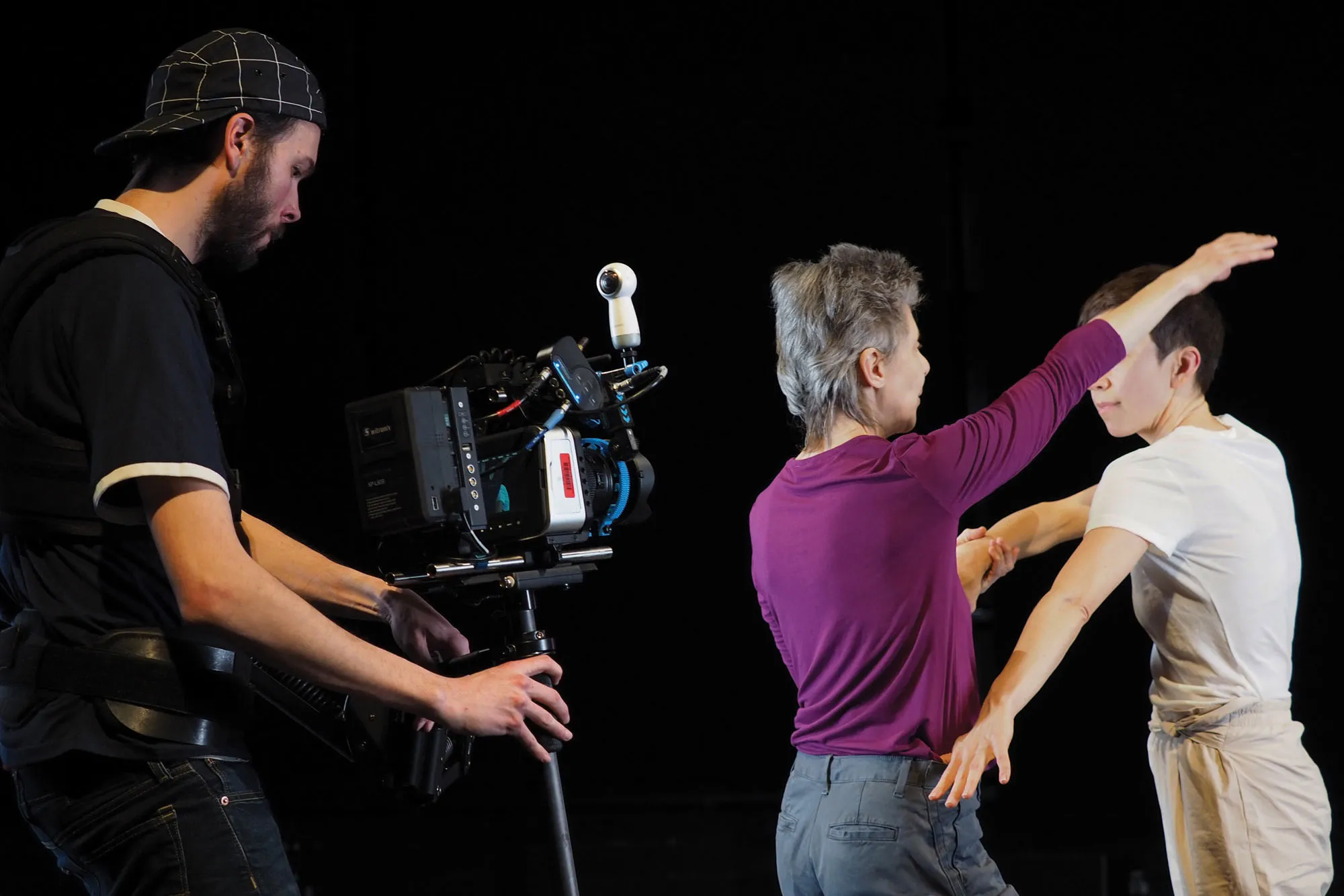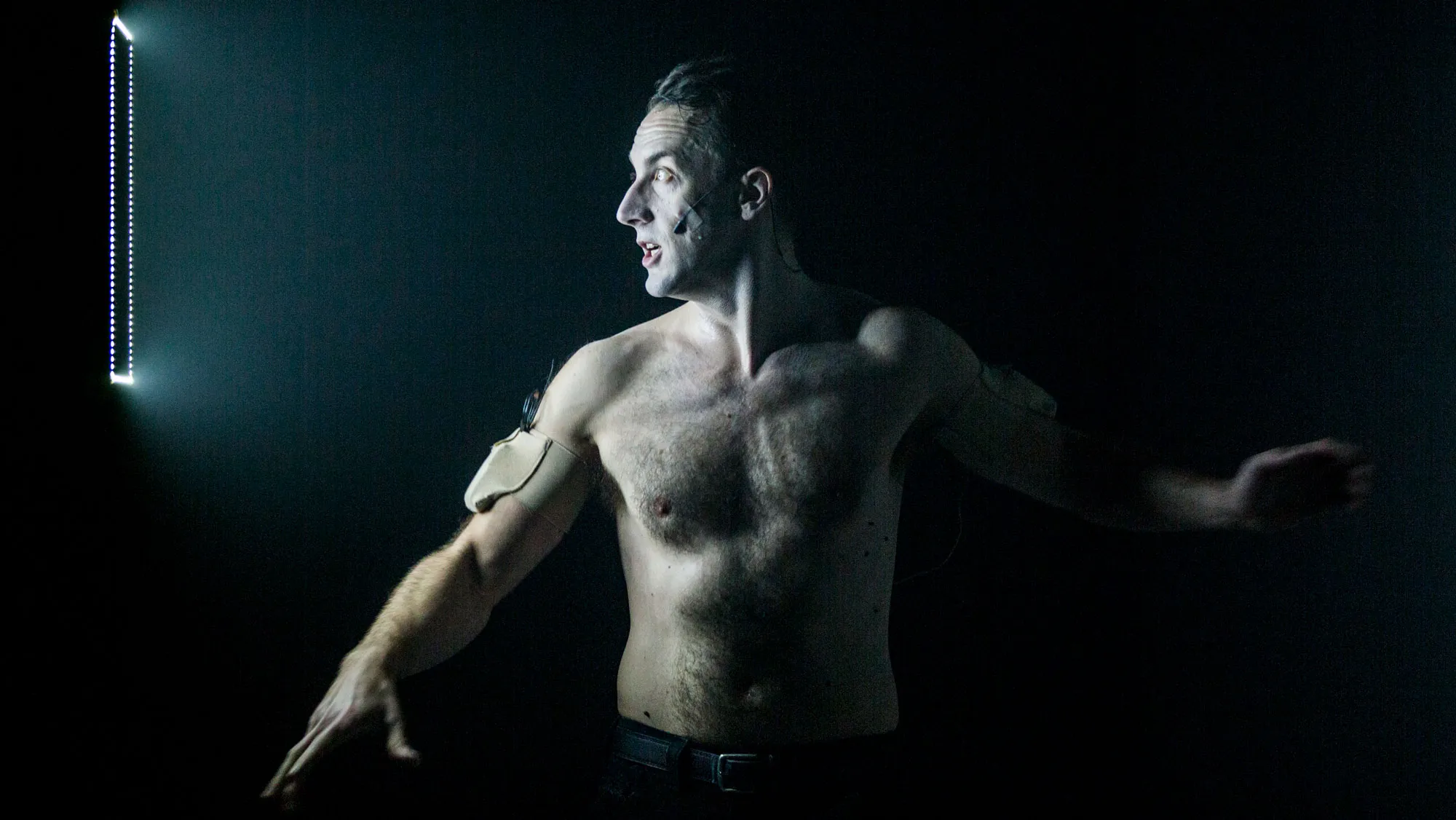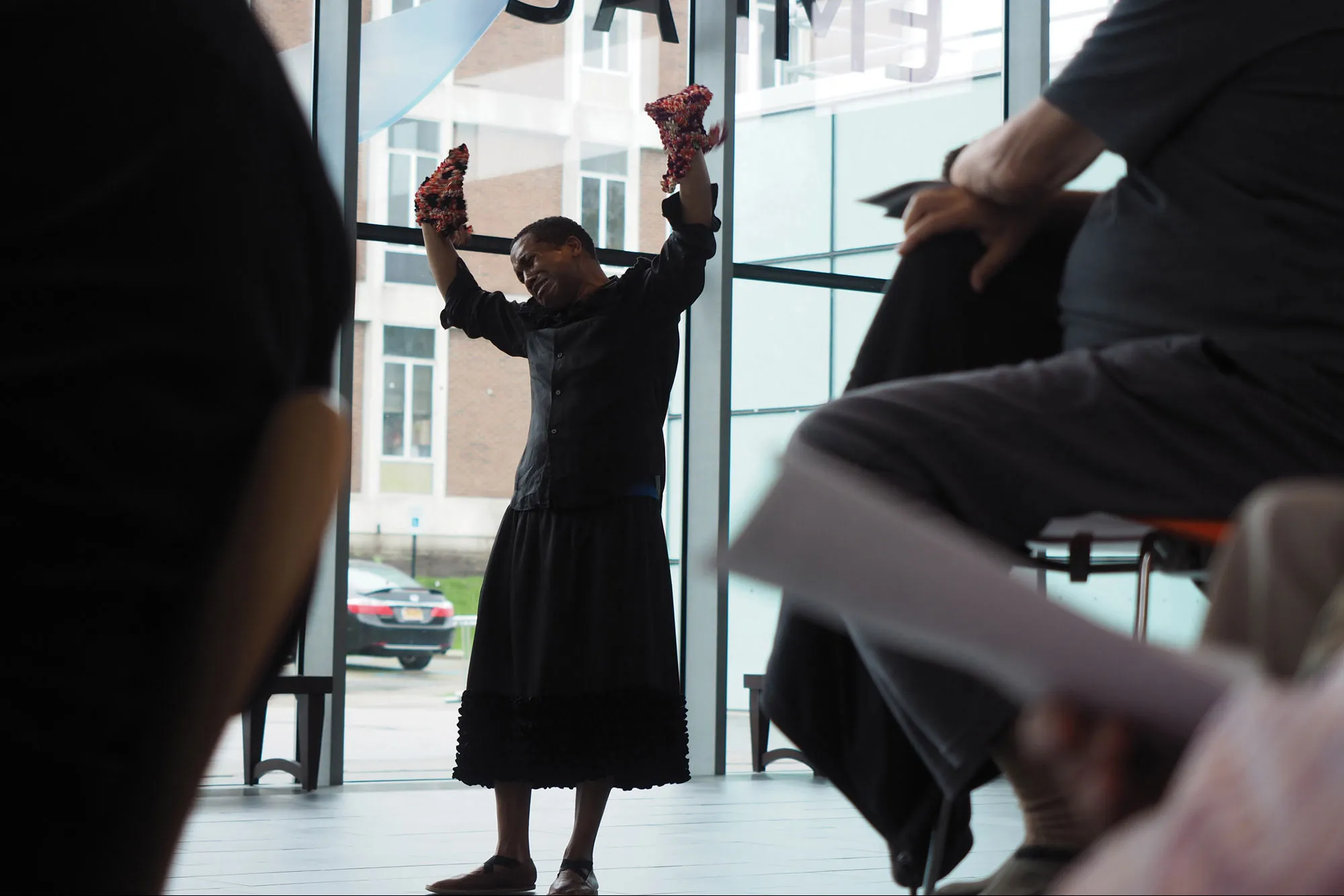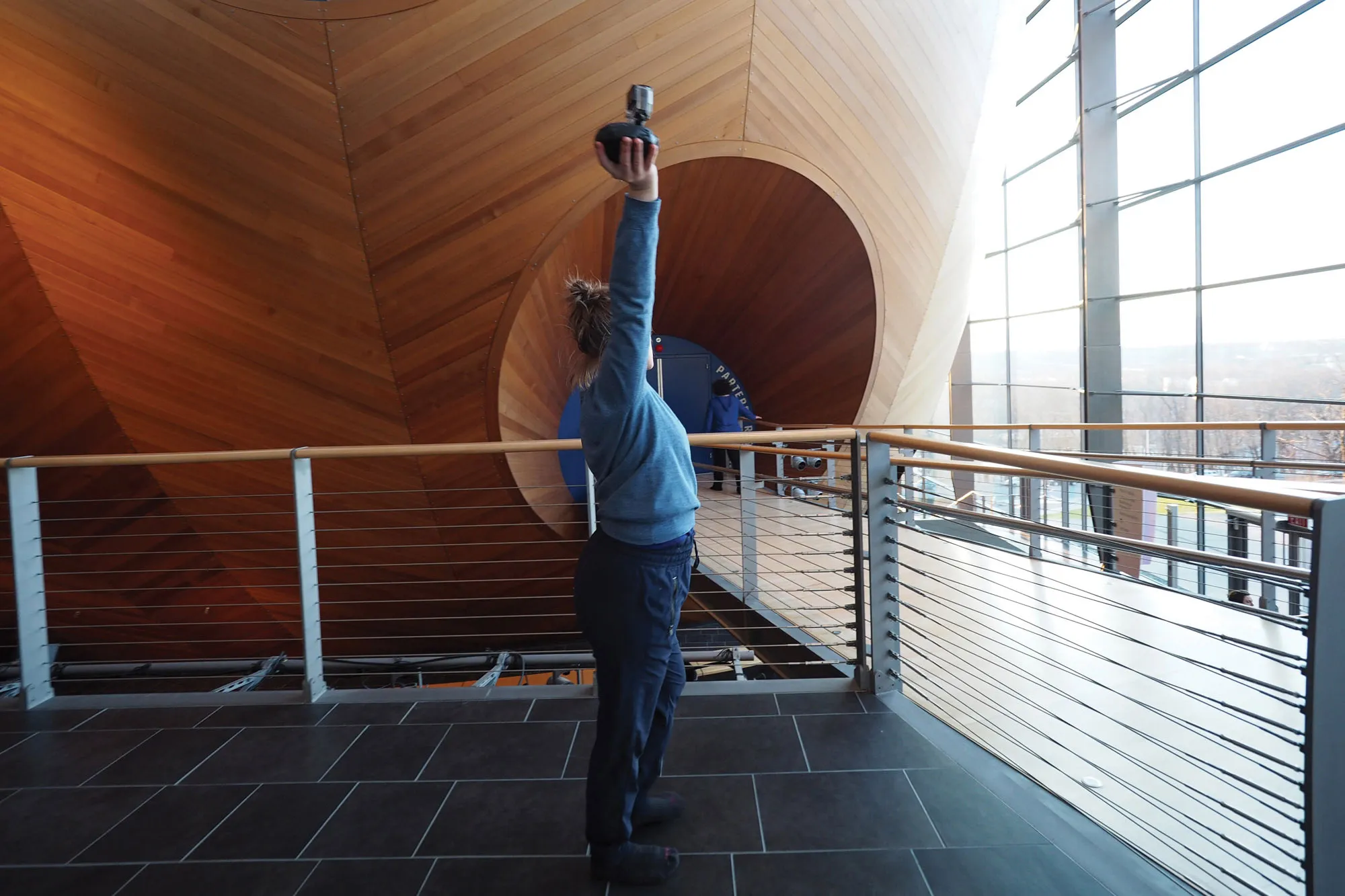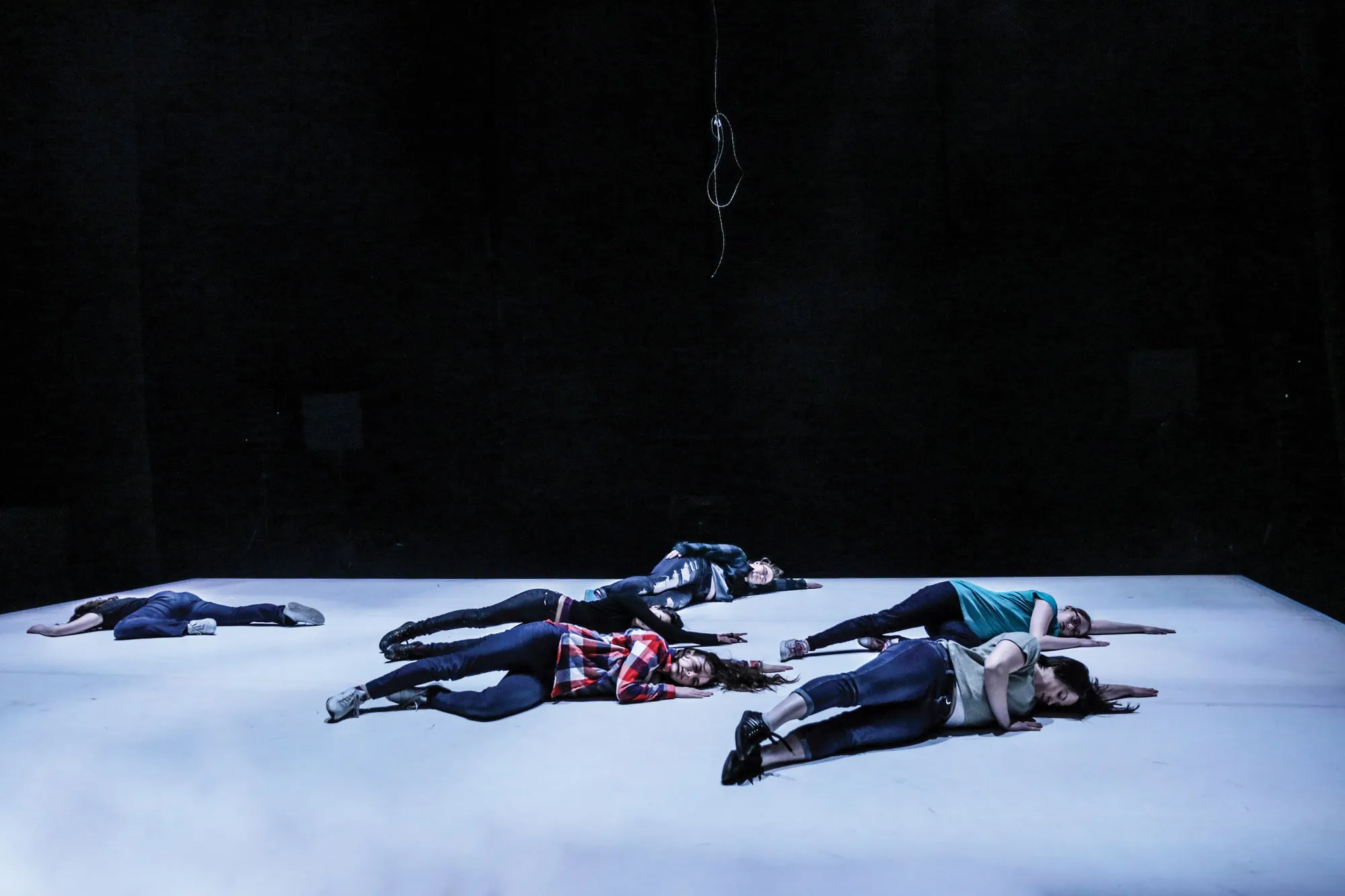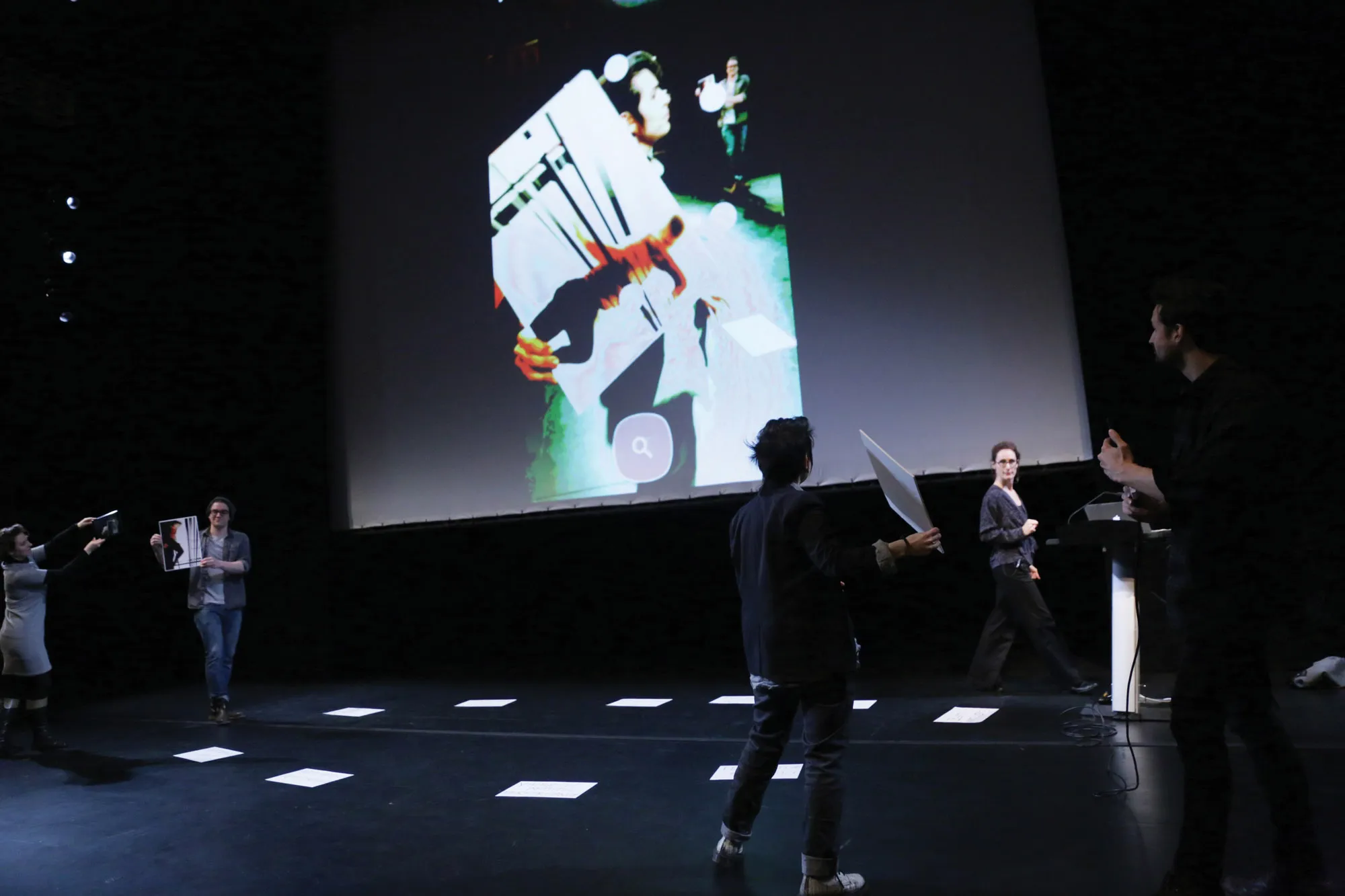
AFTER
Andrew Schneider and his team returned to EMPAC for the world premiere of AFTER, an emotional story about time, bodies, death, and physics.
Following up on Schneider’s Obie Award-winning performance YOUARENOWHERE, which challenged audiences with a storyline drawn from quantum physics, AFTER goes a step further, probing the audience to consider where they are and how they got there. Working in residence at EMPAC, Schneider developed the show’s content with his collaborators Alicia ayo Ohs, Alessandra Calabi, and Bobby McElver. They developed Schneider’s original script in tandem with experiments in new theatrical technology. In an effort to create intimacy and take the audience to the edge of the human condition, AFTER incorporates projection mapping, lighting effects, and sound spatialization technology.
This was the first time that EMPAC’s Wave Field Synthesis speaker array had been applied in the theatrical context, allowing sound designer Bobby McElver to precisely place and move sounds through the performance space.
Andrew Schneider is a Brooklyn-based artist who creates and performs in original performance works and videos and builds interactive electronic artworks and installations. Schneider was a Wooster Group company member (video/ performer) from 2007-2014 and has shown his work at 3LD in New York, the Melbourne Arts Festival, LIFT Festival, and in theaters across France, including Maillon, Théâtre de Strausbourg, and Théâtre de Gennevilliers.
Main Image: Andrew Schneider in residence rehearsing AFTER in 2017. Courtesy the artist. Photo: EMPAC.
